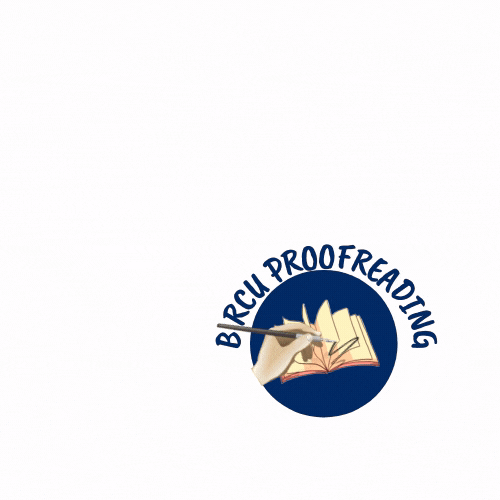The Effect of Electronic Word of Mouth on Buying Interest with Brand Image Mediation as Intervening Variables on Consumers of Scarlet Whitening Products in the Shopee Application
Abstract
Scarlett Whitening is a local beauty brand that focuses on selling on the internet. This product is able to beat international brands in body care, which is 57% of the most popular, and is included in the second position of the top local skincare brands most in demand in e-commerce in 2021. Many forms of electronic word of mouth are carried out by Scarlett Whitening, but have not made its position in the first rank that can be defeated by a local brand that has just gone viral at this time even though the characteristics of e-wom are sufficient enough to make consumers' buying interest number one. The need for identity to be top of mind and consumer confidence and able to compete, in this case is the brand image. The purpose of this study is to find out the effect of e-wom on buying interest through brand image as an intervening variable on consumers of Scarlett Whitening products in the Shopee application. This type of research is quantitative with descriptive analysis. The number of respondents used is 400 consumers who have bought Scarlett Whitening in the Shopee application. The sampling technique is non-probability sampling and Likert scale and data analysis using the partial least square software SmartPLS 3.2.9The result is that electronic word of mouth (X) has a positive and significant effect on Buying Interest (Y). Electronic word of mouth has a positive and significant influence on Brand Image (Z). Brand Image (Z) has a positive and significant influence on Purchase Interest (Y). Electronic word of mouth has a positive and significant influence on Buying Interest through Brand Image.
Keywords
Full Text:
PDFReferences
Abdillah, W., & Jogiyanto, H. (2019). Partial Least Square (PLS) Alternatif Structural Equation Model (SEM) dalam Penelitian Bisnis. In Book: Vol. I (Issue 1).
Arif, S. (2019). Influence of Leadership, Organizational Culture, Work Motivation, and Job Satisfaction of Performance Principles of Senior High School in Medan City. Budapest International Research and Critics Institute-Journal (BIRCI-Journal). P. 239-254
Armstrong, G., Kotler, P., Harker, M., & Brennan, R. (n.d.). Marketing: An Introduction, 4e.
Barton, D., Executive, C., Cope, G., & Canada, B. (2015). Praise for The Digital Economy 20th Anniversary Edition.
Bataineh, A. Q. (2015). The Impact of Perceived e-WOM on Purchase Intention: The Mediating Role of Corporate Image. International Journal of Marketing Studies, 7(1). https://doi.org/10.5539/ijms.v7n1p126
Brand Image, eWOM, Trust and Online Purchase Intention of Digital Products among Malaysian Consumers. (2020). JOURNAL OF XI’AN UNIVERSITY OF ARCHITECTURE & TECHNOLOGY, XII(III). https://doi.org/10.37896/jxat12.03/452
Ferdinand, A. (2006). Pengembangan Minat Beli Merek Ekstensi. In Semarang: Badan Penerbit Universitas Diponegoro.
Ghozali, I. (2014). Structural Equation Modeling Metode Alternatif dengan Partial Least Squares (PLS).
Goyette, I., Ricard, L., & Bergeron, J. (2010). e-WOM Scale : Word-of-Mouth Measurement Scale for e-Services Context *. 23, 5–23.
Ismagilova, E., Dwivedi, Y. K., Slade, E., & Williams, M. D. (2017). Electronic Word of Mouth (eWOM) in the Marketing Context. In SpringerBriefs in Business. http://link.springer.com/10.1007/978-3-319-52459-7
Jalilvand, M. R., & Samiei, N. (2012). The effect of electronic word of mouth on brand image and purchase intention: An empirical study in the automobile industry in Iran. Marketing Intelligence and Planning, 30(4), 460–476. https://doi.org/10.1108/02634501211231946
Kotler, P., Keller, K. L., Brady, M., Goodman, M., & Hansen, T. (2019). 4th European edition. www.pearson.com/uk
Kotler, P., Keller, Manceau, & Hemonnet-Goujot, A. (2016). Marketing Management 15th. In Décisions Marketing (Vol. 83).
Krishnamurthy, A., & Kumar, S. R. (2018a). Electronic word-of-mouth and the brand image: Exploring the moderating role of involvement through a consumer expectations lens. Journal of Retailing and Consumer Services, 43(February), 149–156. https://doi.org/10.1016/j.jretconser.2018.03.010
Niati, D. R., Siregar, Z. M. E., & Prayoga, Y. (2021). The Effect of Training on Work Performance and Career Development: The Role of Motivation as Intervening Variable. Budapest International Research and Critics Institute (BIRCI-Journal): Humanities and Social Sciences, 4(2), 2385–2393. https://doi.org/10.33258/birci.v4i2.1940
Nuseir, M. T. (2019). The impact of electronic word of mouth (e-WOM) on the online purchase intention of consumers in the Islamic countries – a case of (UAE). Journal of Islamic Marketing, 10(3), 759–767. https://doi.org/10.1108/JIMA-03-2018-0059
Schiffman, L. G., & Wisenblit, J. (2019). Consumer Behavior 12th Edition (ada data sampel 401). In Journal of Chemical Information and Modeling (Vol. 53, Issue 9).
Smith, A. C. T., Stavros, C., & Westberg, K. (2017). Brand fans: Lessons from the world’s greatest sporting brands. In Brand Fans: Lessons from the World’s Greatest Sporting Brands. https://doi.org/10.1007/978-3-319-48854-7
Strauss, J., & Frost, R. (n.d.). E-Marketing.
Sugiyono. (2018). Sugiyono Metode Penelitian Kuantitatif Kualitatif. Metode Penelitian Kuantitatif Kualitatif.
DOI: https://doi.org/10.33258/birci.v5i3.6713
Article Metrics
Abstract view : 108 timesPDF - 46 times
Refbacks
- There are currently no refbacks.

This work is licensed under a Creative Commons Attribution-ShareAlike 4.0 International License.

This work is licensed under a Creative Commons Attribution-ShareAlike 4.0 International License.

_.gif)

















_.gif)



